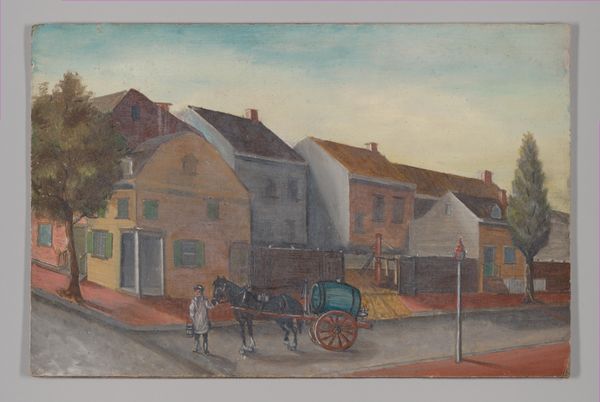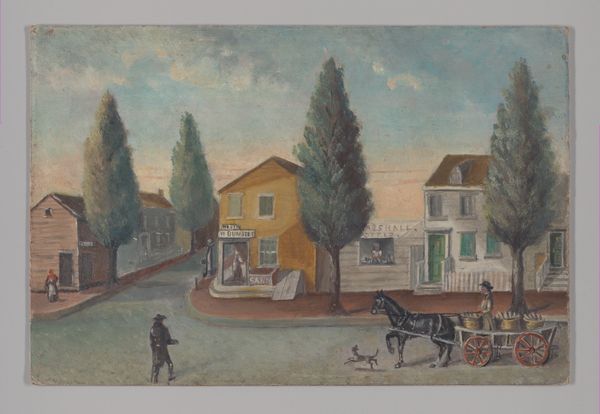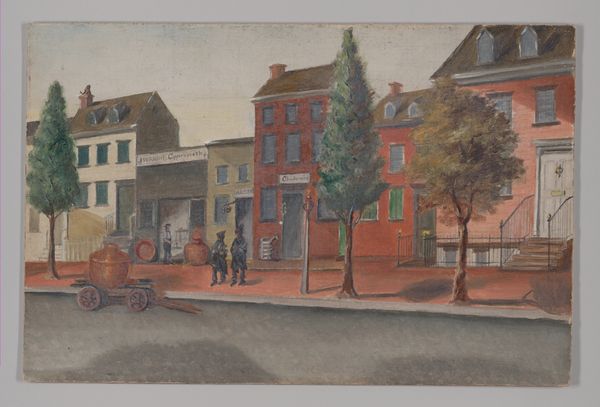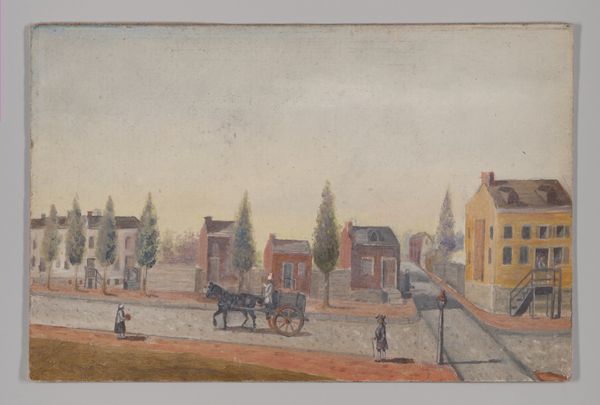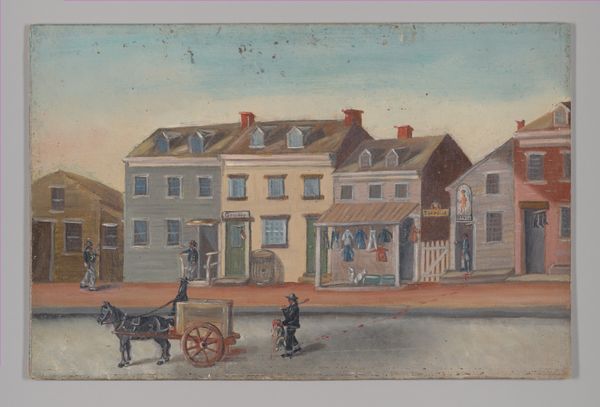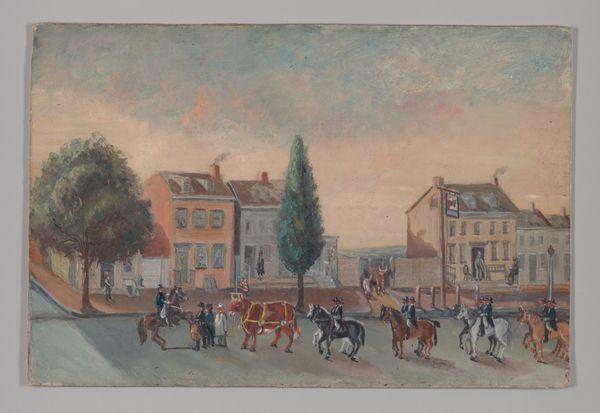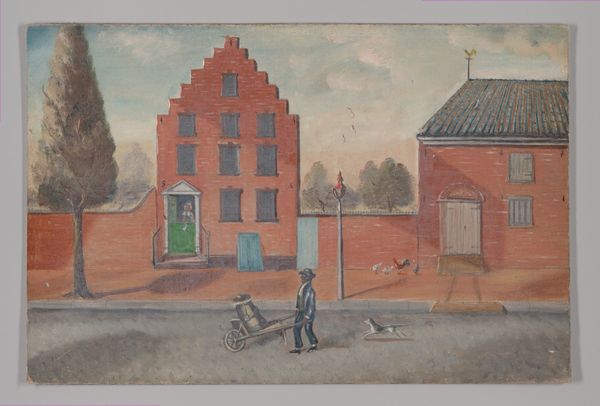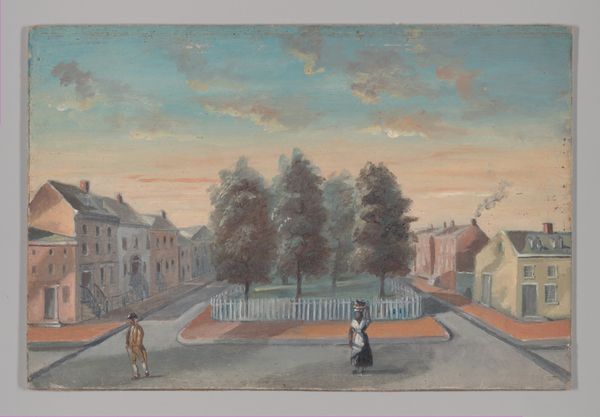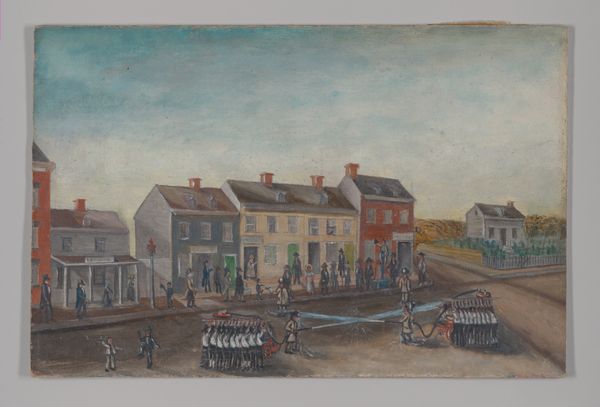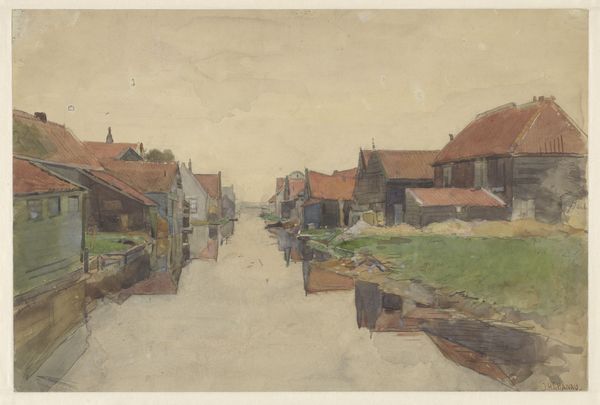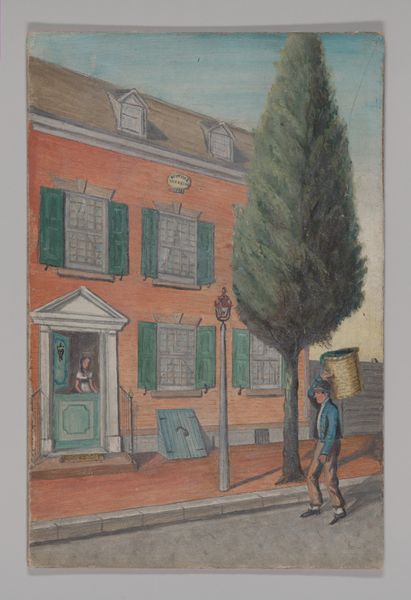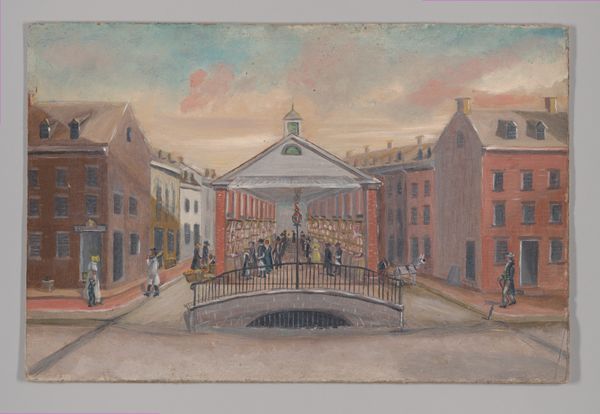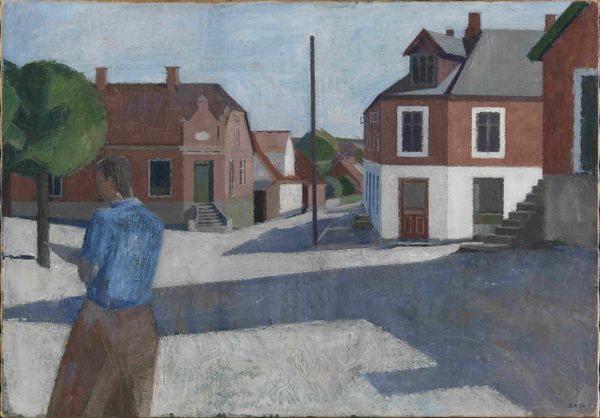
watercolor
#
16_19th-century
#
water colours
#
watercolor
#
coloured pencil
#
cityscape
#
genre-painting
#
realism
Dimensions: 6 1/8 x 9 1/4 in. (15.6 x 23.5 cm)
Copyright: Public Domain
Editor: So, this is "The Sewer," a watercolor and colored pencil work by William P. Chappel from 1870, currently at the Met. It’s such an ordinary street scene, almost drab. What can you tell me about its historical significance? Curator: Well, what seems ‘ordinary’ to us now reflects the rapidly changing urban landscape of the 19th century. Look at the title itself, "The Sewer". It's not a glamorous view, is it? It’s focusing our attention on urban infrastructure, specifically something usually hidden and, well, unpleasant. Editor: Right, definitely not the typical heroic landscapes! So why paint this? Was Chappel making a political statement? Curator: Perhaps, but more likely reflecting a growing social awareness. The placement of infrastructure, the visible divide in the qualities of the architecture along the street... this invites questions about who benefits and who suffers as cities modernize. Genre painting often reflected and shaped perceptions about social classes, daily lives, and power structures within burgeoning urban environments. Consider the street life shown; how does that interplay with his focusing our eye to what is 'underneath' in the very title itself? Editor: I see what you mean! It's not just a pretty picture, it’s about urban experience. Curator: Exactly. Consider the date. After the Civil War, discussions on the quality of life and city management had weight and directly engaged with civic improvement. Did Chappel feel this ordinary view somehow connected to some ideal or commentary about civic space and place? Editor: So, the 'drabness' actually tells a story. Fascinating. I will definitely keep that in mind as I write this section of the guide! Curator: Yes. Try to capture that complexity, how something seemingly mundane can offer powerful insights into its time. I think it would elevate the interpretation beyond face value.
Comments
No comments
Be the first to comment and join the conversation on the ultimate creative platform.
